Planning a trip to Tibet might seem daunting, but it’s more achievable than you think! This guide, brought to you by SIXT.VN, answers your burning questions about visiting this mystical land, ensuring a smooth and unforgettable journey. We offer tailored travel solutions that make exploring Tibet easier than ever. Whether you’re looking for convenient airport transfers, comfortable hotel bookings, or expertly guided tours, SIXT.VN can handle all the logistics, allowing you to focus on the breathtaking beauty of Tibet.
1. Can You Visit Tibet? Is There An Age Limit?
Absolutely! Tibet welcomes visitors of all ages, provided they are physically capable of adjusting to the high altitude. We’ve hosted travelers as young as 8 months old and as seasoned as 82 years young!
However, independent travel in Tibet is not permitted. According to Tibet travel policies, all travelers must book their Tibet tour through a registered local travel agency, such as SIXT.VN. You’ll need to join either a group tour or a private tour and be accompanied by a licensed guide and driver throughout your journey. This regulation ensures your safety and helps preserve the unique culture of Tibet.
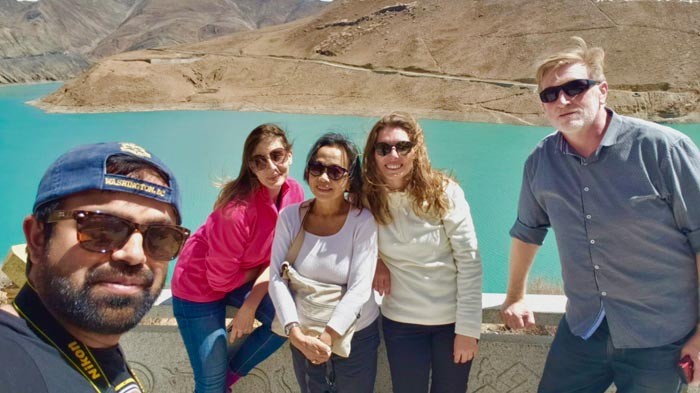 Manla Reservoir
Manla Reservoir
2. Is It Safe To Visit Tibet Nowadays?
Yes, Tibet is generally a very safe place to visit. Whether you’re a solo traveler, a woman traveling alone, or a family, you’ll find Tibet surprisingly secure. The social environment is stable, and the local Tibetan people are known for their hospitality and welcoming nature towards international visitors.
The main safety concern in Tibet is altitude sickness. Travelers with pre-existing conditions like high blood pressure, cardiovascular disease, respiratory issues, coronary heart disease, severe asthma, lung disease, or even a simple untreated cold should consult their doctor before considering a trip to Tibet.
Tips for a Safe Trip:
- Acclimatize: Spend a day or two resting in Lhasa upon arrival to allow your body to adjust to the high altitude.
- Medication: Consult your doctor about medications that can help alleviate altitude sickness symptoms.
- Oxygen: Consider bringing portable oxygen or utilizing oxygen bars in Lhasa if needed.
- Listen to Your Body: If you experience any discomfort, immediately inform your guide.
According to research from the High Altitude Medicine & Biology journal, in 2018, proper acclimatization is key to preventing altitude sickness. (According to research from the High Altitude Medicine & Biology journal, in 2018, proper acclimatization is key to preventing altitude sickness).
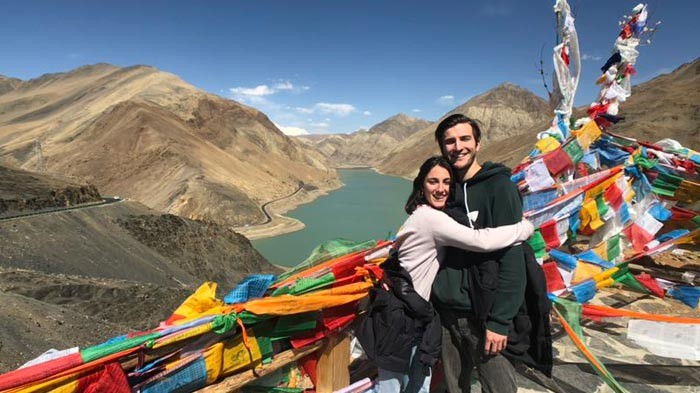 Stunning view of lake in Tibet
Stunning view of lake in Tibet
3. What Travel Documents Are Required To Visit Tibet?
To visit Tibet, you’ll need three essential documents:
- Tibet Travel Permit: This is the most crucial document and cannot be obtained independently.
- Chinese Visa: Required for most nationalities.
- Valid Passport: Ensure your passport has at least six months of validity remaining.
Tibet Travel Permit:
This permit can only be applied for through a licensed local travel agency like SIXT.VN after booking a pre-arranged tour package. SIXT.VN can handle the entire permit application process for you, ensuring a hassle-free experience.
Chinese Visa:
You can typically obtain a Chinese visa from your country’s Chinese embassy or consulate.
Visa-Free Travel:
If your passport allows for a 15 or 30-day visa-free stay in China, you can apply for a Tibet Travel Permit without needing a Chinese visa.
Important Considerations:
- Apply for your Tibet Travel Permit at least 20 days before your trip.
- Use the same passport for your Tibet Travel Permit application and your actual trip.
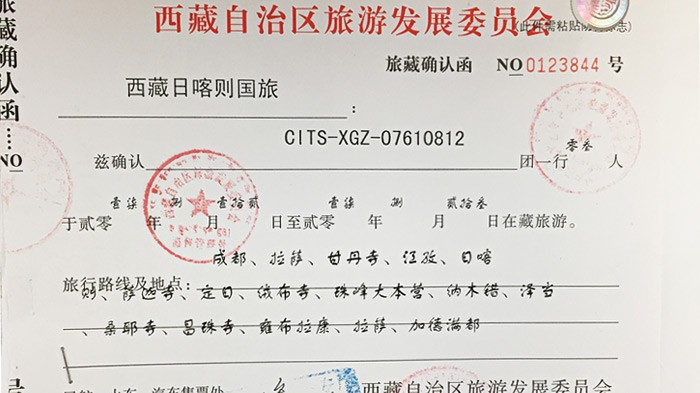 Tibet Travel Permit
Tibet Travel Permit
4. How Much Does It Cost To Visit Tibet?
The cost of a Tibet tour can vary significantly, ranging from $500 USD to over $2500 USD (excluding transportation to Tibet). The final price depends on several factors:
- Duration of your stay: Longer trips naturally cost more.
- Travel Season: Peak season (summer) is generally more expensive.
- Destinations: Visiting remote areas increases costs.
- Accommodation: Luxury hotels cost more than guesthouses.
- Personal Expenses: Souvenirs, extra activities, and dining choices contribute to the overall cost.
Cost-Effective Travel:
Joining a Tibet small group tour with SIXT.VN is the most effective way to reduce costs. Sharing transportation, accommodation, and service fees with other travelers significantly lowers the overall price compared to a private tour.
Customize Your Tour:
SIXT.VN also allows you to customize your own group tour with family and friends. The larger the group, the lower the per-person cost!
5. When Is The Best Time To Visit Tibet?
Spring (April-May) and Autumn (September-October) are often considered the best times to visit Tibet.
Spring and Summer Advantages:
- Pleasant Weather: Warm temperatures, neither too hot nor too cold.
- Clear Mountain Views: Increased chances of seeing majestic peaks like Everest.
Winter Advantages:
- Lower Prices: Flights and hotels are significantly cheaper.
- Less Crowded: Enjoy a more peaceful and authentic experience.
Summer Considerations:
- Rainy Season: Rainfall mainly occurs at night, with minimal impact on daytime activities.
- Peak Tourist Season: Expect larger crowds and higher prices.
- Festivals: Summer hosts several popular Tibetan festivals, such as the Shoton Festival and Saga Dawa Festival.
Important Notes:
- Winter temperatures in Lhasa are milder than you might expect, with average daytime temperatures around 18°C (64°F).
- Be cautious of potential landslides or geological hazards when traveling overland in summer, particularly on the Sichuan-Tibet Highway.
- Check the updated Tibetan Calendar for precise dates of Tibetan festivals.
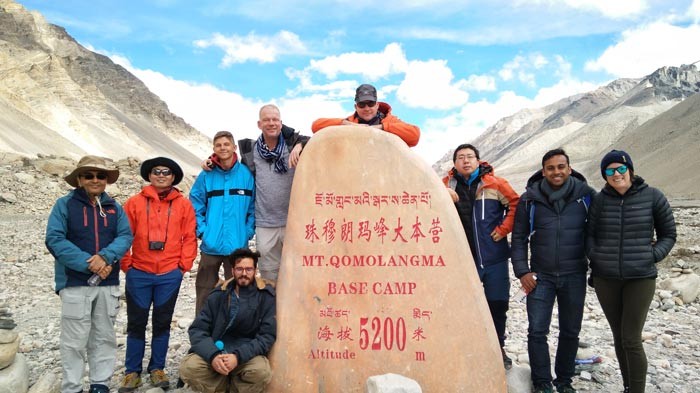 Everest Base Camp
Everest Base Camp
6. How Do You Get To Tibet? Which Is The Easiest Way?
You can access Tibet through two primary gateways: Mainland China and Nepal.
Entering Tibet From Mainland China
Mainland China provides the most diverse options for reaching Tibet:
- By Air: Flying is the quickest and most convenient option, with frequent flights from major cities like Chengdu, Beijing, Shanghai, and Guangzhou to Lhasa (Lhasa Gonggar Airport, LXA) and Nyingchi (Nyingchi Mainling Airport, NIM).
- By Train: The Qinghai-Tibet Railway, connecting Xining to Lhasa, is a remarkable engineering feat and a scenic travel experience. Trains also depart from Beijing, Shanghai, Guangzhou, Chengdu, Chongqing, and Lanzhou, connecting to the Qinghai-Tibet Railway in Xining.
- By Road: Four highways lead to Lhasa: the Sichuan-Tibet Highway (G318 and G317), the Qinghai-Tibet Highway (G109), the Yunnan-Tibet Highway (G214), and the Xinjiang-Tibet Highway (G219). These routes offer unforgettable overland adventures.
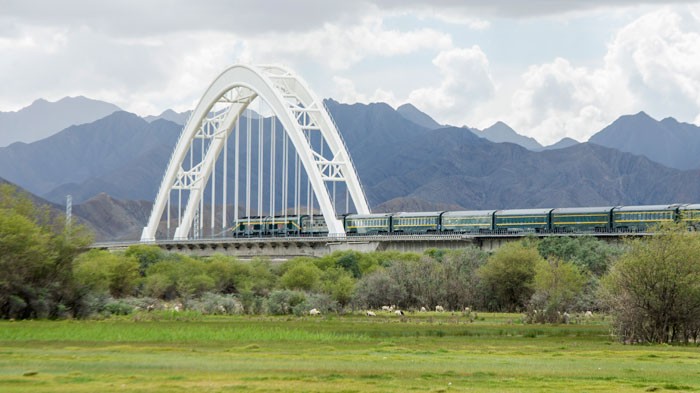 Qinghai-Tibet Railway
Qinghai-Tibet Railway
Entering Tibet From Nepal
Nepal offers a unique entry point to Tibet:
- By Air: Kathmandu (Tribhuvan International Airport, KTM) is the only international city with direct flights to Lhasa.
- By Road: The Gyirong border crossing provides an overland route from Kathmandu to Lhasa, offering a stunning journey through the Himalayas.
Getting Around Tibet
Road travel is the dominant mode of transportation within Tibet. Be prepared for long distances if your itinerary includes destinations outside of Lhasa.
Road Conditions:
Road conditions in Tibet have significantly improved in recent years, with most major routes now paved with asphalt. This makes travel by car, bike, or motorbike much more comfortable and accessible. SIXT.VN can arrange comfortable and reliable transportation for your tour, ensuring a smooth and enjoyable experience.
7. What Are The Must-See Places In Tibet?
Tibet boasts a wealth of cultural, spiritual, and natural attractions. Here are some highlights:
- Lhasa: The heart of Tibet, home to iconic landmarks like the Potala Palace, Jokhang Temple, and Sera Monastery. A classic 4-day Lhasa tour is perfect for first-time visitors.
- Yamdrok Lake or Namtso Lake: These stunning turquoise lakes are easily accessible from Lhasa and offer breathtaking scenery.
- Everest Base Camp (EBC): Witness the world’s highest peak from the Tibetan side. An 8-day tour from Lhasa allows for an overnight stay at EBC to enjoy the sunrise or sunset.
- Mount Kailash: A sacred mountain revered by multiple religions. Embark on a challenging yet rewarding kora (circumambulation) around the mountain.
- Lhasa to Kathmandu Overland Route: This epic journey traverses the Himalayas, showcasing stunning landscapes and cultural treasures along the Sino-Nepal Friendship Highway.
8. What To Pack? Do You Have To Pack A Lot?
It’s best to pack light when traveling to Tibet. A boarding case, a hiking backpack, and a carry-on backpack should suffice.
Essential Packing Items:
- Clothing: Prioritize warmth! Layers are key. A windproof jacket is highly recommended.
- Footwear: Comfortable walking shoes are essential. Hiking boots are recommended for trekking.
- Skincare: The dry climate can be harsh. Pack lotion and lip balm.
- Sun Protection: Sunglasses, a hat, and sunscreen with a high SPF (50+) are crucial.
- Medications: Consult your doctor and bring any necessary prescriptions, as well as cold medicine, gastrointestinal medicine, and pain relievers.
- Optional Gear: Trekking poles, biking accessories, and sleeping bags can be rented in Lhasa.
9. Accommodation And Dining Tips For Visiting Tibet
Accommodation in Tibet
Hotel standards in Tibet, particularly outside major cities like Lhasa, Shigatse, and Nyingchi, may not be as luxurious as in other parts of the world.
Lhasa, Shigatse, and Nyingchi:
Offer a range of hotels, including some international brands.
Remote Areas:
Expect more basic accommodations, such as guesthouses or yak tents. These often have limited facilities, such as pit toilets and no running water.
What To Eat In Tibet
Traditional Tibetan cuisine includes:
- Tsampa: Roasted barley flour, a staple food.
- Yak Butter Tea: A salty, buttery beverage.
- Tibetan Noodles: Hearty and filling.
- Yak Meat: A common source of protein.
Variety:
Chinese dishes are widely available, and Lhasa offers a growing selection of Nepali, Indian, and Western restaurants.
Dietary Needs:
Inform your travel consultant or tour guide in advance if you have any specific dietary requirements, such as vegan or Muslim food.
 Tibetan restaurant
Tibetan restaurant
Conclusion
Traveling to Tibet is an incredible adventure, and with proper planning and preparation, it’s easier than you think. Whether you’re interested in breathtaking landscapes, profound spirituality, or unique cultural experiences, Tibet has something to offer everyone.
SIXT.VN is your trusted partner for planning your dream trip to Tibet. We provide expert guidance, seamless travel arrangements, and exceptional customer service. We ensure that you are healthy and well-prepared for high-altitude travel. Getting to Tibet is convenient with flights and trains.
Ready to Start Your Journey?
Contact SIXT.VN today to discuss your travel ideas and let us help you create the perfect Tibet itinerary!
SIXT.VN – Your Gateway to Unforgettable Experiences in Tibet.
Address: 260 Cau Giay, Hanoi, Vietnam
Hotline/Whatsapp: +84 986 244 358
Website: SIXT.VN
FAQ: Your Questions About Traveling To Tibet Answered
1. Do I need to speak Tibetan or Chinese to travel in Tibet?
While knowing some basic Tibetan or Mandarin Chinese phrases can be helpful, it’s not essential. Your tour guide will act as a translator, and many hotels and restaurants in tourist areas have staff who speak English.
2. Can I travel to Tibet independently?
No, independent travel in Tibet is not permitted. All foreign travelers must be part of an organized tour booked through a licensed travel agency.
3. Is it ethical to visit Tibet?
This is a complex question with varying viewpoints. Some argue that tourism supports the local economy and helps preserve Tibetan culture, while others express concerns about the impact of tourism on the region’s environment and cultural identity. Researching the issue and making informed choices about your travel can help you contribute positively to the local community.
4. What is altitude sickness, and how can I prevent it?
Altitude sickness is a condition that can occur when traveling to high altitudes. Symptoms can include headache, nausea, fatigue, and shortness of breath. To prevent altitude sickness:
- Acclimatize gradually by spending a few days in Lhasa before traveling to higher elevations.
- Drink plenty of water.
- Avoid alcohol and strenuous activity.
- Consider taking medication like Diamox (consult your doctor first).
5. What is the currency used in Tibet?
The official currency of Tibet is the Chinese Yuan (CNY). Credit cards are accepted in larger hotels and businesses in Lhasa, but it’s a good idea to have cash on hand for smaller purchases and in more remote areas.
6. Can I access the internet in Tibet?
Internet access is available in Lhasa and other major towns, but it may be slower and less reliable than what you’re used to. Some websites and social media platforms may be blocked.
7. What is the local culture like in Tibet?
Tibetan culture is deeply rooted in Buddhism. Respectful behavior is essential, particularly when visiting monasteries and religious sites. Dress modestly, avoid loud noises, and ask for permission before taking photos of people or inside temples.
8. Are there ATMs in Tibet?
ATMs are available in Lhasa and other larger towns, but it’s a good idea to withdraw enough cash before traveling to more remote areas.
9. Is it safe to drink the tap water in Tibet?
No, tap water in Tibet is not safe to drink. Drink bottled water or boiled water.
10. What should I do in an emergency?
In case of an emergency, contact your tour guide immediately. They will be able to assist you with medical care, transportation, and communication.
 St.Regis Lhasa Resort
St.Regis Lhasa Resort



